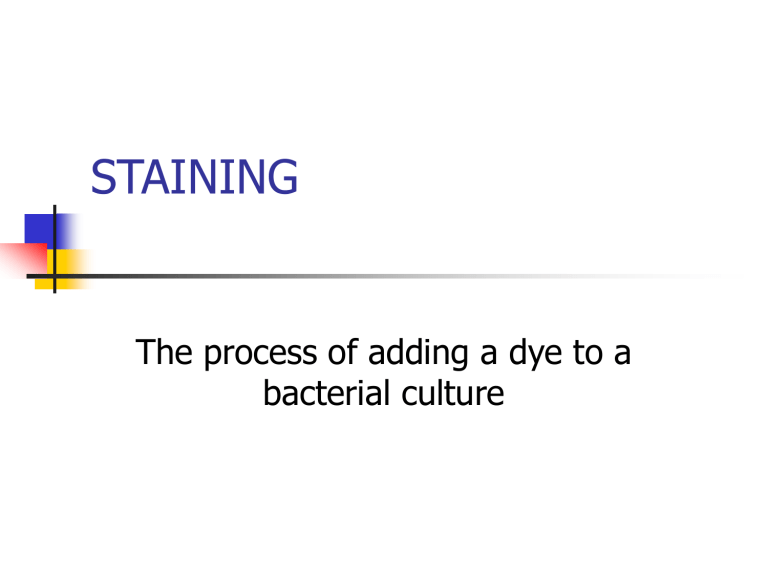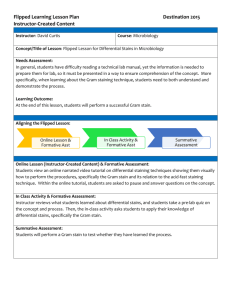STAINING

STAINING
The process of adding a dye to a bacterial culture
Dyes
Basic dye—possess a positive charge
Acidic dye—possess a negative charge
Remember, bacteria posses a slight negative charge on their surface
SIMPLE STAINING
Use only one dye
For the purpose of viewing bacterial shapes and arrangements
Simple Stain the following:
1)
2)
E. coli
S. aureus
3) A colony from the “Microbes in the Environment” plate
3 Types of Staining Procedures
Simple Staining (shapes and arrangements)
Differential Staining (Gram reactions)
Special Staining (Capsule, flagella, spores)
PROCEDURE:
Prepare smear of bacterium
Air dry
Heat fix the bacteria to the slide
(release of “sticky” proteins from the cell surface of the bacteria adheres the bacterial cell to the slide)
Apply crystal violet to the smear; let stand 45 seconds
Procedure Cont.
Rinse with distilled water or tap water
Blot dry with bibulous paper
View using microscope
Page 49
Page 54
Page 55
Methylene blue
Crystal Violet
Fuchsin
Simple stains allow visualization of
Shapes
Arrangements
Proteus vulgaris
Staphyloccocus aureus
Bacillus cereus
Fracisella tularensis
Causitive agent of Rabbit fever
Methylene blue stain
Sacharromyces cerevisiae
(Brewer’s yeast)
Methylene blue stain
Bacillus anthracis (anthrax)
Gram positive
Crystal violet stain
Campylobacter jejuni (traveler’s diarrhea)
Gram negative
Fuchsin stain











